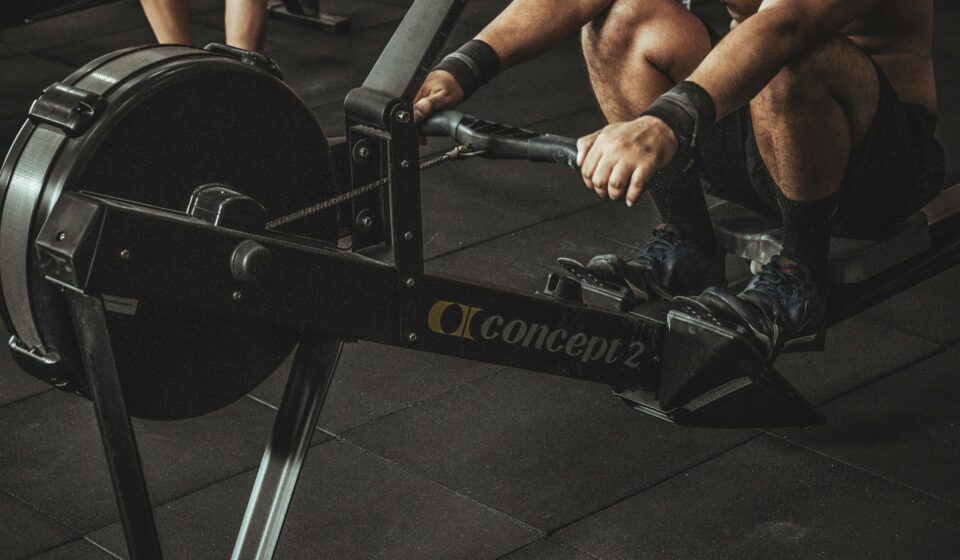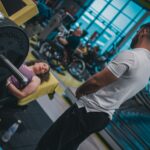
Functional Training: Your Path to Real-World Strength
Most gym workouts focus on isolated muscle groups—bicep curls, leg extensions, and chest presses that target single muscles at a time. While these exercises have their place, they don’t necessarily prepare your body for the movements you perform every day. Lifting groceries, climbing stairs, carrying a sleeping child, or moving furniture all require multiple muscle groups working together in coordinated patterns.
Table Of Content
Functional training bridges this gap by emphasizing exercises that mimic real-life movements. Instead of training muscles in isolation, functional fitness focuses on movement patterns that enhance your ability to perform daily activities with greater ease, efficiency, and reduced risk of injury. This approach to strength training doesn’t just make you stronger in the gym—it makes you stronger for life.
Whether you’re an athlete looking to improve performance, a busy professional seeking practical fitness benefits, or someone recovering from injury, functional training offers a comprehensive approach to building strength that translates directly to your everyday activities.
What Makes Training “Functional”
Functional training centers on compound movements that engage multiple muscle groups simultaneously while challenging your balance, coordination, and stability. These exercises typically involve movement in multiple planes of motion, just like real-world activities do.
Traditional strength training often isolates muscles and restricts movement to a single plane. A leg press machine, for example, only moves your legs forward and backward. In contrast, a functional exercise like a squat with rotation incorporates forward-backward movement, side-to-side stability, and rotational control—much more similar to how you move throughout your day.
The key principles of functional training include:
Multi-joint movements: Exercises that work several joints at once, such as deadlifts, squats, and push-ups, mirror how your body naturally moves during daily tasks.
Core integration: Your core muscles stabilize your spine and pelvis during virtually every movement. Functional exercises challenge core stability rather than training it in isolation.
Balance and proprioception: Many functional exercises are performed on unstable surfaces or in positions that challenge your balance, improving your body’s ability to react and adjust to unexpected situations.
Movement patterns over muscle groups: Instead of focusing on working the biceps or quadriceps, functional training emphasizes patterns like pushing, pulling, squatting, and rotating.
Building Strength for Daily Movement
The primary benefit of functional training lies in its direct application to daily movement patterns. When you strengthen the same muscle combinations and movement patterns you use every day, routine activities become easier and less taxing on your body.
Consider the simple act of getting up from a chair. This movement requires hip mobility, leg strength, core stability, and coordination between multiple muscle groups. A traditional leg extension exercise might strengthen your quadriceps, but it doesn’t train the complete pattern of rising from a seated position. A squat, however, closely replicates this movement while building strength throughout the entire kinetic chain.
Carrying groceries involves grip strength, core stability, postural control, and the ability to maintain balance while loaded asymmetrically. Functional exercises like farmer’s walks, single-arm carries, and loaded carries train these exact demands, making grocery shopping less of a workout and more of a routine task.
Hip mobility exercises play a crucial role in functional training, as hip flexibility and strength directly impact your ability to perform movements like squatting, lunging, climbing stairs, and getting in and out of cars. Tight or weak hips can lead to compensatory movements that stress other parts of your body, particularly your lower back.
Key Benefits for Everyday Activities
Functional training delivers benefits that extend far beyond the gym, improving your quality of life through enhanced physical capability and confidence in movement.
Improved posture and alignment: Many people spend hours each day sitting at desks, leading to rounded shoulders, tight hip flexors, and weak glutes. Functional exercises address these imbalances by strengthening the posterior chain—the muscles along the back of your body—while improving mobility in commonly tight areas.
Enhanced balance and stability: As we age, balance naturally declines, increasing the risk of falls and injuries. Functional training challenges your balance systems through exercises performed on unstable surfaces or in dynamic positions, helping maintain and improve stability throughout life.
Reduced injury risk: By strengthening movement patterns rather than isolated muscles, functional training helps ensure that all the muscles involved in a particular movement are adequately prepared for the demands placed on them. This balanced approach reduces the likelihood of overuse injuries and muscle imbalances.
Increased energy efficiency: When your body moves efficiently, daily activities require less energy. Functional training teaches your muscles to work together effectively, reducing the metabolic cost of movement and leaving you with more energy throughout the day.
Greater confidence in physical activities: As your strength and movement quality improve, you’ll likely find yourself more willing to engage in physical activities, whether that’s playing with your children, trying a new sport, or tackling home improvement projects.
Essential Functional Movement Patterns
Several fundamental movement patterns form the foundation of both functional training and daily activities. Mastering these patterns ensures that you’re prepared for the physical demands of everyday life.
Squatting: This pattern appears in sitting down, standing up, picking up objects from the floor, and getting in and out of low vehicles. Squats and their variations train the muscles of your hips, thighs, and core while promoting hip mobility and ankle flexibility.
Hinging at the hips: Bending forward to tie your shoes, lifting objects from the floor, or loading the dishwasher all require the ability to hinge at your hips while maintaining a neutral spine. Deadlift variations teach this essential pattern while strengthening your posterior chain.
Pushing and pulling: Opening doors, moving furniture, and lifting objects overhead all involve pushing or pulling movements. Functional pushing exercises like push-ups and overhead presses complement pulling movements like rows and pull-ups to maintain balanced shoulder and arm strength.
Carrying and walking: Simply walking while carrying objects—whether it’s luggage, groceries, or a child—challenges your core stability, postural control, and unilateral strength. Loaded carries train these qualities while improving endurance and grip strength.
Rotating and anti-rotation: Many daily activities involve rotation, such as reaching across your body or looking over your shoulder while driving. Functional training includes both rotational exercises and anti-rotation exercises that teach your core to resist unwanted movement.
Getting Started with Functional Training
Beginning a functional training program doesn’t require expensive equipment or complex routines. Many effective functional exercises use only body weight or simple tools like resistance bands and medicine balls.
Start with basic movement patterns and focus on quality over quantity. A well-performed bodyweight squat provides more benefit than a poorly executed weighted squat. As you develop competency in fundamental movements, you can add resistance, increase complexity, or combine movements into more challenging patterns.
Assess your current movement quality: Before adding weight or complexity, evaluate how well you perform basic patterns. Can you squat to a comfortable depth without your knees caving inward? Can you hinge at your hips without rounding your back? Addressing movement limitations early prevents compensation patterns and reduces injury risk.
Progress gradually: Functional training can be humbling, especially if you’re accustomed to traditional gym exercises. Movements that challenge balance, coordination, and multiple muscle groups simultaneously may feel awkward initially. Allow time to develop these skills rather than rushing to add weight or difficulty.
Focus on daily activities: Consider which activities challenge you most in daily life, then select exercises that address those specific demands. If you struggle with overhead reaching, include exercises that improve shoulder mobility and strengthen the muscles involved in overhead movement.
Include hip mobility work: Given the amount of time most people spend sitting, hip mobility exercises should be a cornerstone of any functional training program. Tight hips limit your ability to squat, lunge, and move efficiently, so regular stretching and mobility work for this area pays significant dividends.
Making Functional Training Part of Your Routine
The beauty of functional training lies in its versatility and practical nature. You can incorporate functional exercises into existing workout routines, perform them as standalone sessions, or even integrate movement breaks into your workday.
Start small: Begin with 15-20 minutes of functional exercises two to three times per week. This might include a few squats, some hip mobility work, and basic core stability exercises. Consistency matters more than duration, especially when establishing new habits.
Use compound movements: Choose exercises that work multiple muscle groups simultaneously. This approach maximizes your training time while ensuring balanced development across your entire body.
Listen to your body: Functional training should make you feel better, not worse. If an exercise causes pain or feels wrong, modify it or choose an alternative. The goal is to improve your movement quality and daily function, not to push through pain.
Track improvements in daily activities: While you might not be lifting heavier weights in the traditional sense, pay attention to how daily activities feel. Are stairs easier to climb? Do you feel more stable when reaching for objects? These improvements indicate that your functional training is working.
Your Next Steps Toward Better Daily Strength
Functional training represents a shift in thinking about fitness—from pursuing numbers on a scale or weight plate to building capacity for real-world movement. This approach doesn’t diminish the value of traditional strength training, but rather complements it by ensuring that your gym work translates to improved quality of life.
The movements you practice in functional training sessions directly prepare your body for the physical demands of daily life. As you develop strength in these patterns, routine activities become easier, your risk of injury decreases, and your confidence in physical capabilities grows.
Consider starting with just a few basic functional exercises this week. Practice squats during commercial breaks, work on hip mobility exercises in the morning, or try a few push-ups against a wall throughout your day. Small, consistent efforts compound over time, leading to significant improvements in how you move and feel.
Remember that functional fitness is ultimately about enhancing your life outside the gym. Every squat prepares you to stand up more easily, every balance exercise helps prevent falls, and every core strengthening movement supports better posture throughout your day. This is training with purpose—building the strength that matters most for the life you want to live.



